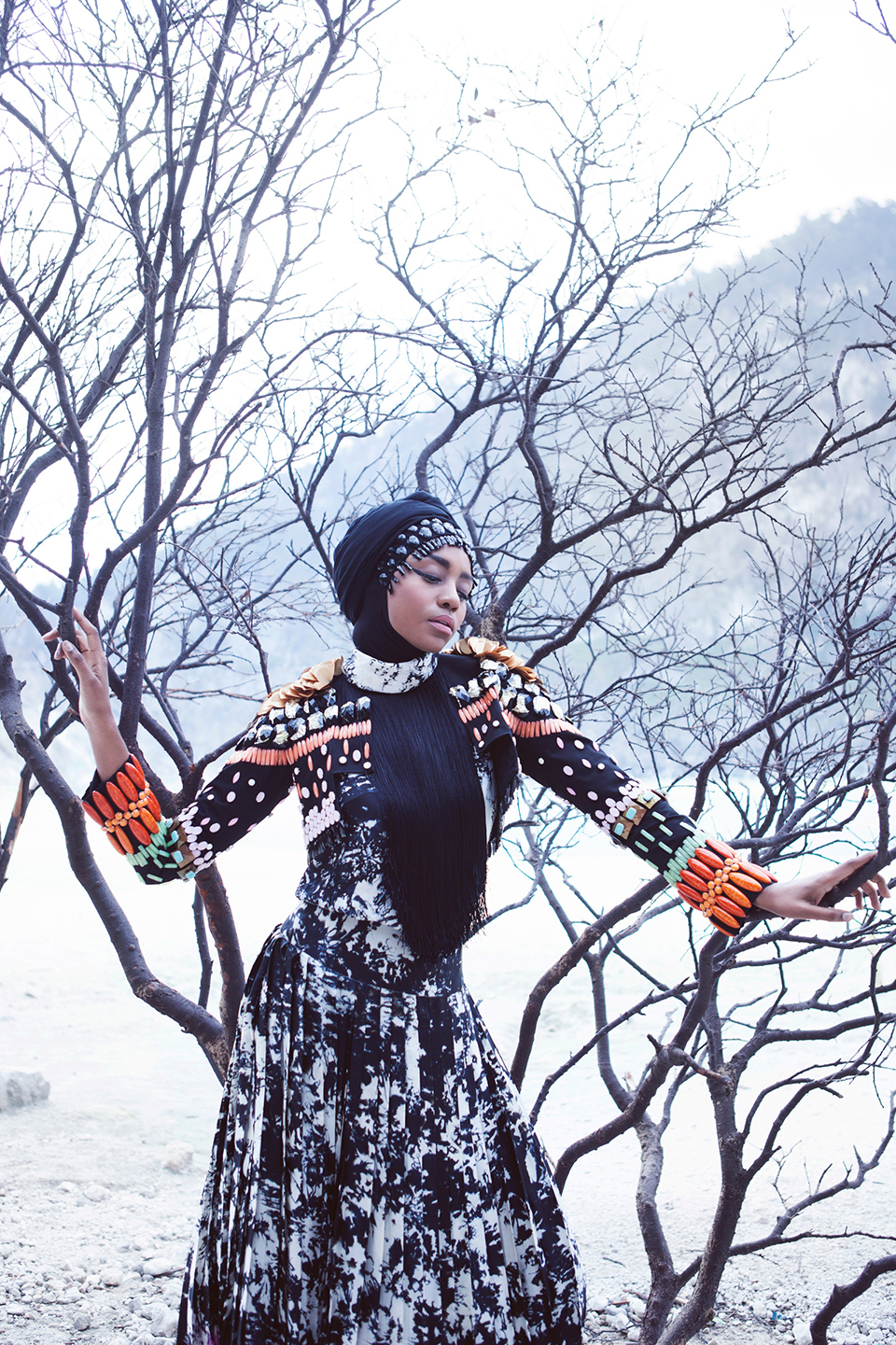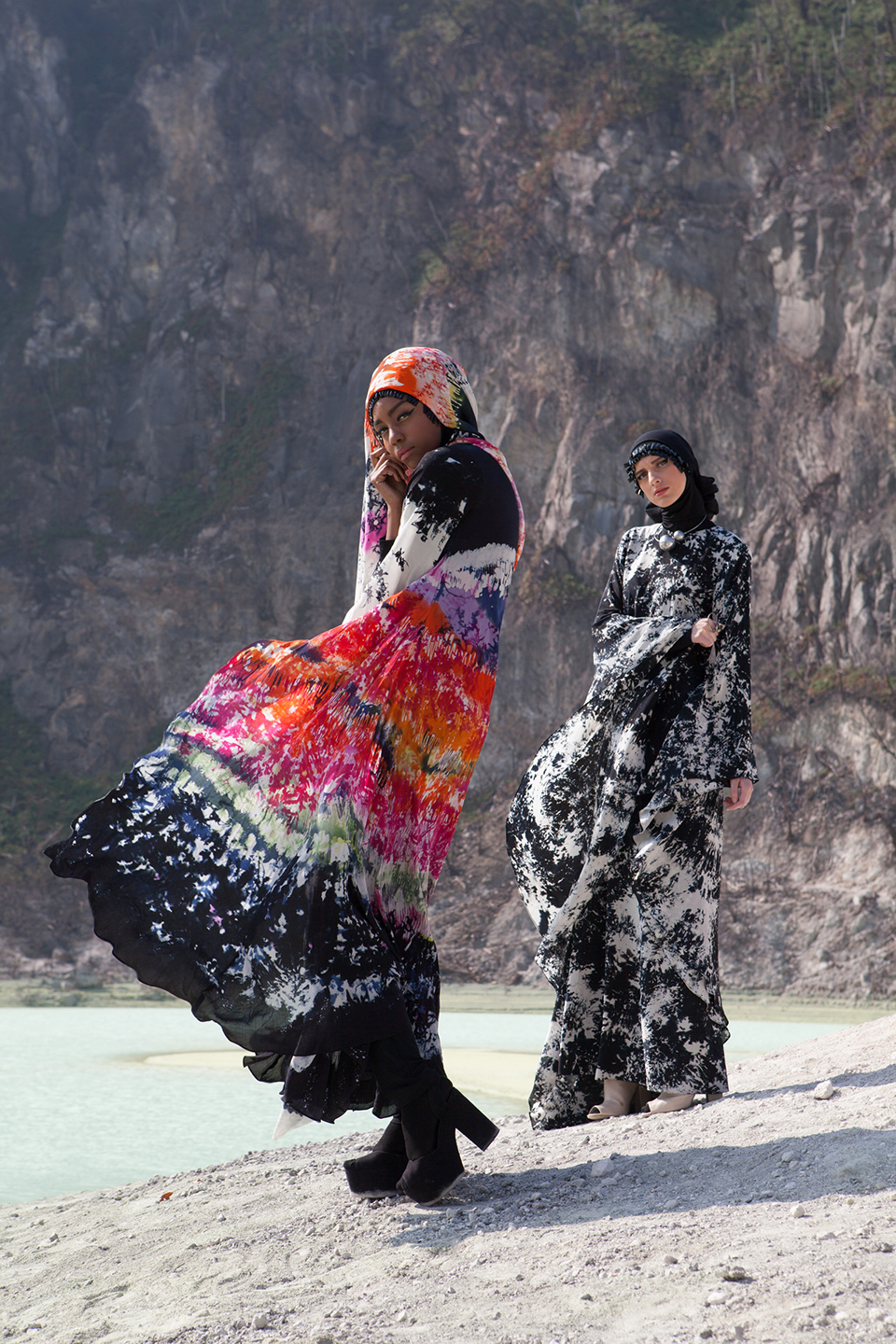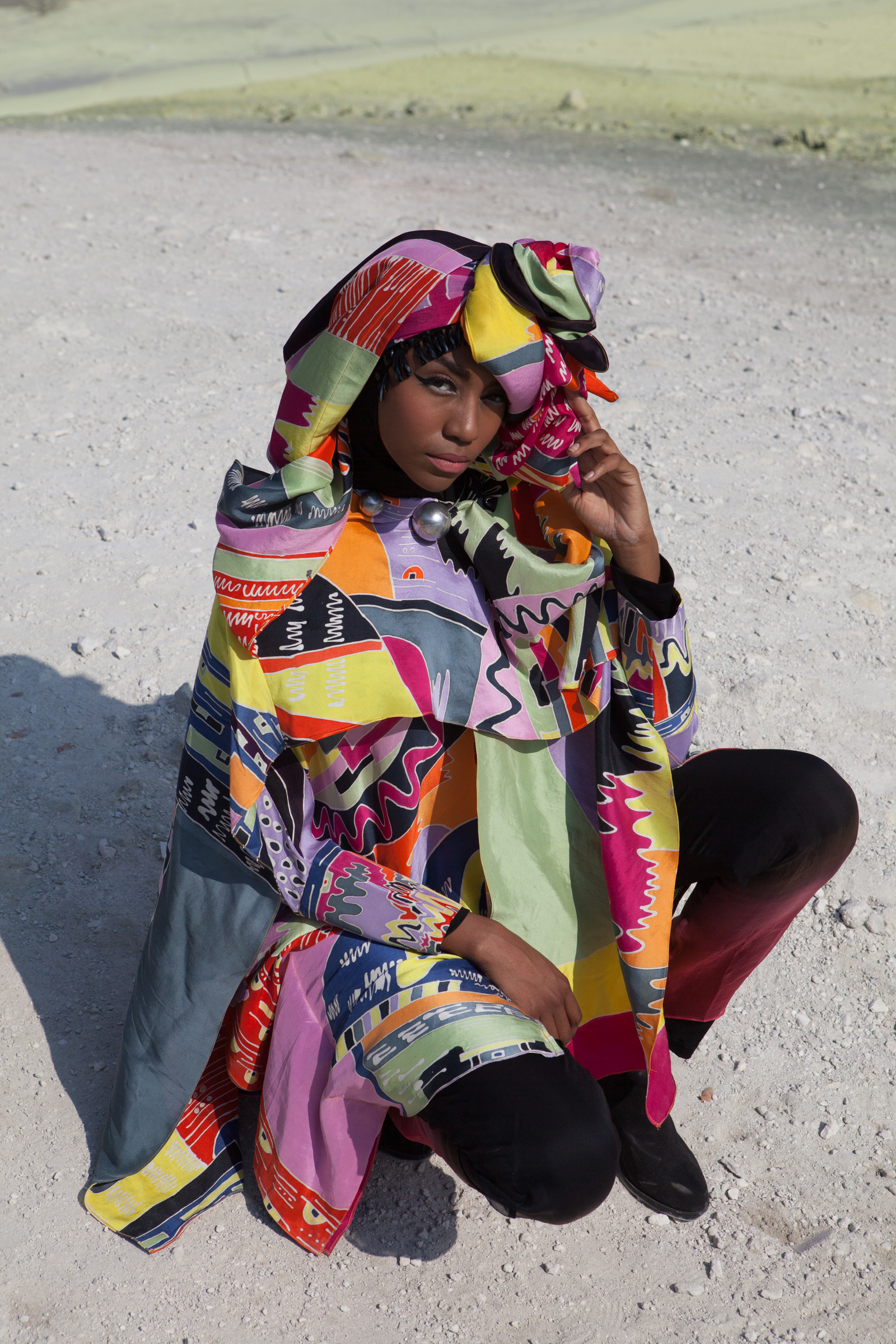Mélange is the title of Odette Steele’s luxury women’s wear textile collection. Mélange is defined as a varied mixture. Her works invokes the reality of what it means to be in our world; a kaleidoscope of experiences and interactions that have influenced our complex and often tricky understanding of who we are and what we have become. Her work may be textile design, but within it there is a feeling of trying to make sense of an Africa with a rich past, as well as a current reality influenced by a painful past. I got to have a discussion with this talented fabric designer on how these themes are brought to life through her work.
Motlatsi Khosi (MK): Textile is such an intense specialization which at times does not get its due praise. It’s the final product that gets the acknowledgement. How did you get into this niche practice and what drew you to the production behind the production (Textile design)?
Odette Steele (OS): Well when I first knew that I wanted to study fashion after high school, I typically assumed that this meant I had to be a clothing designer. Although I have some talents in this area, mainly in construction and styling, it soon came to my attention very quickly that this in fact was not my real strength!
On entering my foundation year for Access to Fashion at London College of Fashion I found that textiles are what really excited me. It was something that came very naturally to me in the way that my work developed. This then led to my choice in furthering the craft by obtaining my Bachelor’s Degree in Fashion Textiles, specializing in Embroidery and Embellishment.
Also, what easily drew me to Textiles was that I saw the potential to be able create many things apart from garments. From Fashion accessories to Interiors, my creations can be translated onto various products which opens the opportunity for me to work in many sectors, making my artwork accessible and exposed in a range of platforms.
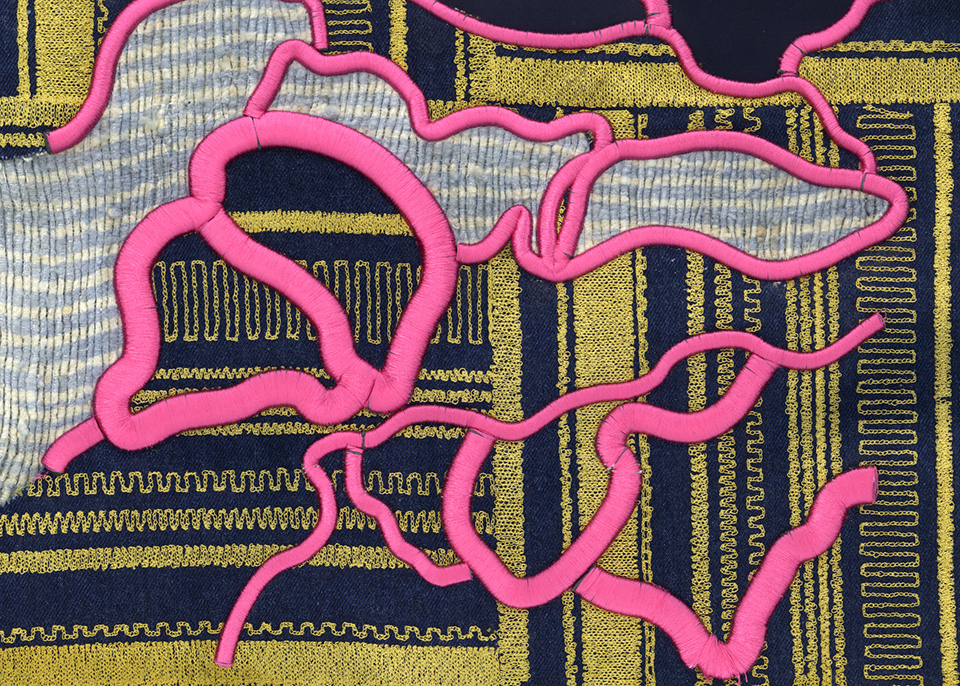
MK: Mélange is a beautiful word. It denotes a combination of parts with their own unique individual aspects. I look at the fabric and almost see a use of fabric within the fabric. Where did the inspiration for mélange come from? Is there a story to be told within your method of combining pieces in order to create a new whole?
Mélange is social commentary on globalisation – and an exploration of Appropriation, Identity and Cross Culture.
When I started this project I was really questioning, firstly my identity as an African living in Britain, and secondly, how and where this experience would lead me in my career. One reference point for this was Kaiser, S. B. (2012) Fashion and Cultural Studies, where he notes that the world of dress is composed of socially constructed judgements in addition to a multitude of people asking themselves, “Where do I belong? With whom do I identify? What are my cultural connections? ….How do others compare with the way that I look? ….How do style, fashion, and dress become strategies to establish and reinforce the idea of having a place to be and become in the world.”
Of course I love all African textiles…its my heritage, so this was a familiar starting point. But in this case I chose to focus on the ‘West African Textile’ that all the world is familiar with, and this to me is the African ‘Fancy/Wax’ Prints, which can be found in every ‘African Market’. With the state of globalisation, and therefore appropriation, that has long been going on in the fashion industry, it can sometimes be difficult to truly pinpoint one’s identity and cultural connections. An interesting discovery on how some of these prints came to be as widely recognized as ‘African Print’ shows exactly this.
From my research on the historical Background of Wax Prints I found how the current Textile Situation was one where “African textile production [was] squeezed out of the market by the more efficient and technologically advanced Asian producers. It is well known that not only have the Asian producers limited authentic African supply to the EU and US, but they are dominating the African market as well due to lower production costs and higher technological advancement” (Mutume 2006).
Investigating the journey of African textiles, from the historical to its current is the backbone of this textile collection. I wanted to showcase the importance of this research by depicting that the countries and cultures (African, Indonesian, Dutch, and Chinese) involved in this journey have individually identified their own design aesthetics when it comes to colour, texture, technique etc., with each being accomplished in its own right.
Mélange really seeks to create a modern identity of an already formed one. This is not to take away the original journey of appropriation, but rather to celebrate a movement into the ‘Altermodern’ where globalisation and the advancement of change is inevitable. It is therefore something that should be embraced and diversity should be encouraged, enabling a future where there is an equal mélange of global focus within textiles.

MK: Using the example of the Shweshwe pattern, historically, the creation and trading of textiles cannot be separated from the business of state/colonial production. Under the East India Company trade to the east was what resulted in the creation of pit stops in Southern Africa. The so-called African or Shweshwe prints were the results of European business unable to access Indonesian markets due to consumers finding the material inferior. Africa became a dumping ground, last on the list in terms of Eurocentric economic realism.
I see your work as almost an assault to this economic logic. You are creating textiles within our own space as Africans. Your work represents a political need to move beyond the logic of Africans as just consumers. Your work represents a collective will to be the producers as well as creators of our own ideas. How do you see your work in terms of what it means to be part of the emerging creatives pushing towards a new logic of Africa taking charge of the narrative on local design.
OS: Exactly. This was precisely the findings of my project, just in another region of Africa. And you know, initially this made me upset. Facing the fact that something that I had grown up ‘knowing’ as an African product, and something that I had taken so much pride in and drawn inspiration from as a distinctive and beautiful product, had not originated from Africa. Even today it is not designed or produced in Africa. It broke my heart!! Now this might be slightly melodramatic, but I am almost certain that every African textile designer felt exactly the same way when they found out!
But I quickly had to realize that this is life and I cannot change the past. In fact I don’t really want to. It has shaped us. Because if there is one thing that we Africans know is how to make lemonade out of lemons!!! We have made ourselves African Kings and Queens from those once rejected fabrics. This I love.
Despite how or why something has come to be, I cannot dwell on this as it will just consume my creativity. And if I don’t manage to find the positivity or hope in something, and I create in this way, then my work does not become my work because it is not of me.
So, simply now for me as a designer I feel that it is my responsibility to construct what I feel is my identity as an African woman and as a Global woman. To see the genuine raw creativity coming out of our continent from this wave of emerging artists and designers is so inspiring because it allows me to see the future where we are the makers and the creators of our style, by respecting the past and embracing the possibilities for the future.
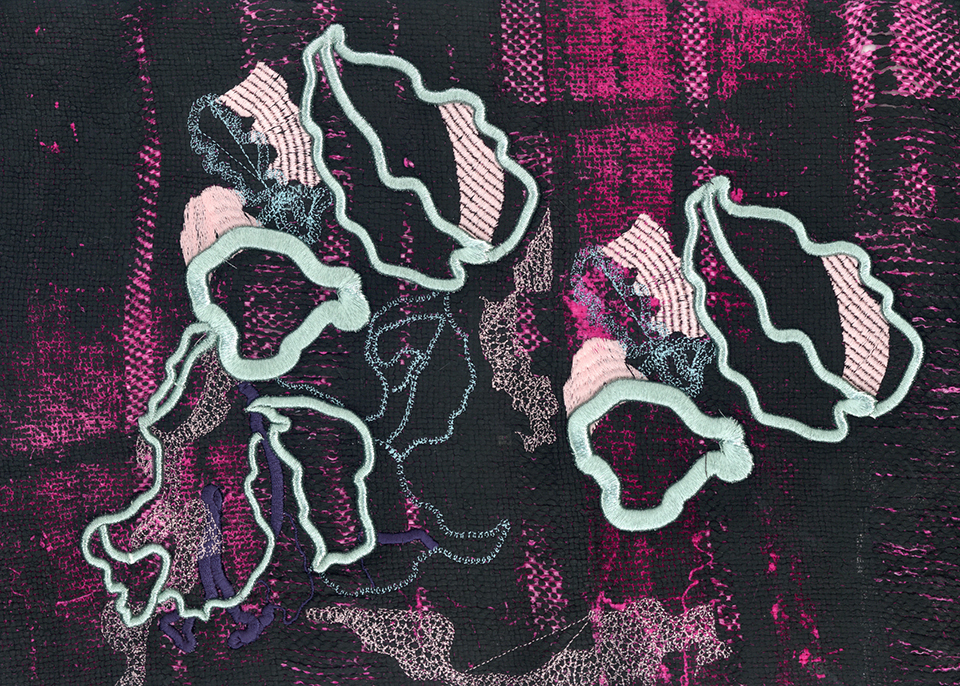
MK: Your work takes on a mélange based on a consideration of the environment by recycling materials and creating works in order to inject them into the luxury brand markets. Why the need to specifically make your textiles a luxury item? What is it that you define as luxury? How does this definition fit in with the themes of the Mélange series and its considerations of the “common themes within different cultures”.
OS: At the core of my work I am always seeking to build ethics and sustainability as an integral part of the production process. It is simply about realizing and understanding the role that you have as a human being; that it is a duty and not a choice to try as best as we can to develop this type of business.
Mélange embodies luxury by seeking the craftsmanship and skill of traditional hand rendered techniques. It becomes the kind of item that you would never dream to throw away. Something that is not easily replaced. And it is important to target the luxury markets because there is a stigma around the fact that if it is recycled it is not up to a certain standard. So it is about breaking these constructs that have been formed over the years in our need for wanting and needing everything to be new. I feel that if we do not practice craftsmanship and sustainability then we are devaluing the product. Craft is universal. Craft is empowerment. Craft is expression. I hope that my craft will always nourish my pocket, but if not I know that it will always nurture my soul.
View more of Odette’s work from the series on her web page and follow her on Instagram.
